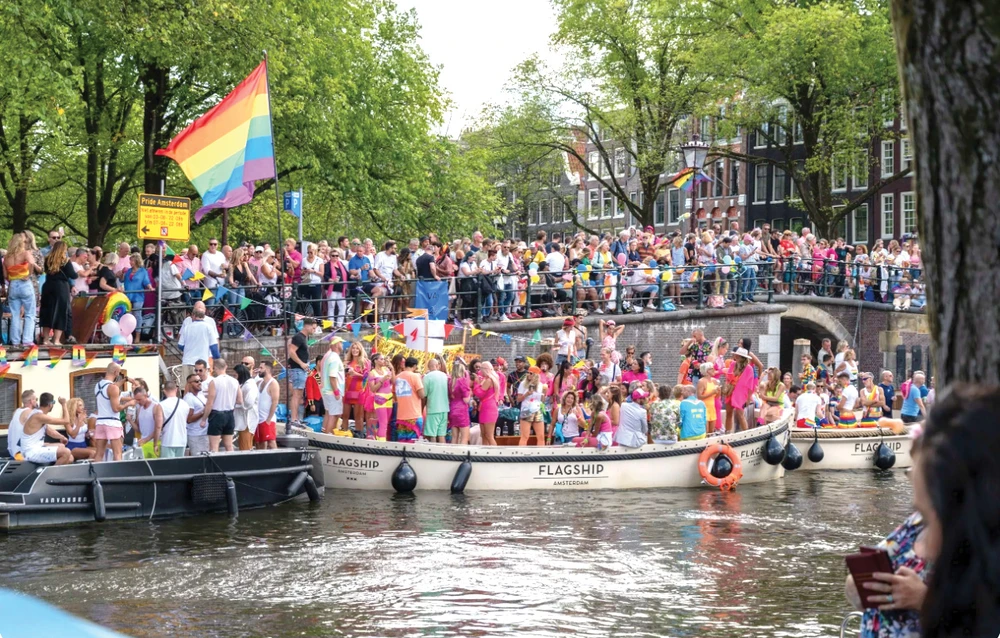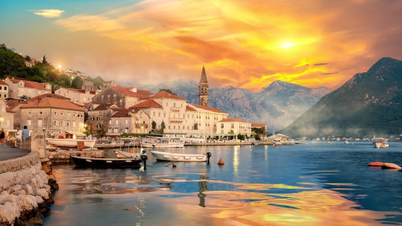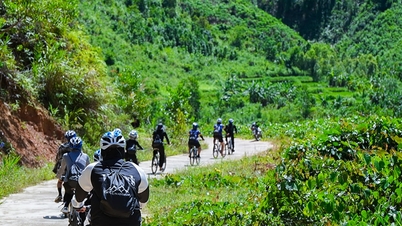Anti -tourism movements are emerging in many European countries. To “cool down” this wave before the summer arrives, the governments of these countries have applied solutions to balance the interests of local people and profitable areas.
Go home
Tourism is considered the biggest source of income for the beautiful Canary Islands in Spain, the second most visited country in the world . But due to dissatisfaction with the skyrocketing overtourism, local protests have begun, with graffiti appearing in many places on the islands telling tourists to “go home”.
Likewise, the ancient city of Malaga, the capital of the Costa de Sol – a seaside paradise located right on the Mediterranean coast – has long been a favorite destination for millions of tourists thanks to its sunny climate and relatively low cost of living. Now, locals plaster anti-tourist phrases on the outside of their houses, ranging from the mild “this used to be my home” (antes esta era mi casa) or “this used to be the city center” (antes esto era el centro) to the more aggressive “go home” (a tu puta casa)…
According to The Local Spain, in 2023, 14 million domestic and foreign tourists visited Malaga. Recent data from Spain's National Statistics Institute (INE) shows that 8 out of 10 new residents moving to Malaga are now foreigners. Around 630 tech companies, including Google, have opened offices in Malaga, turning it into Europe's Silicon Valley, attracting thousands of international workers and digital nomads. This reality has woken up locals in Malaga, who believe they are paying too high a price and being driven out of their own hometown.
Or like Tenerife - one of Spain's most famous islands, recently declared a water emergency. This situation has further fueled the anger of local people, because some tourist areas there use up to 6 times more water than residential areas, putting pressure on important reserves for drinking water and agricultural production. The Canarian Weekly reported that "tourism phobia" is also spreading in tourist hotspots such as the Balearic islands of Mallorca, Gran Canaria... with walls covered with messages "sending off" tourists.
Meanwhile, from the beginning of April to the end of October, the Spanish Aviation Association has planned to carry out up to 758,000 flights, an increase of 9% compared to the same period in 2023, bringing the total capacity to 240 million seats.

Services to the Canary Islands and the southern region of Andalusia, one of Spain's top summer tourist destinations, will increase by 14%, while Madrid and Barcelona will see 15% more seats by 2023, said Javier Gandara, head of the Spanish Airlines Association. Airlines are also increasing the number of seats on routes between Spain and markets such as Germany and the UK.
A compromise solution
Tourism association Exceltur estimates that revenue in the sector, which includes hotels and transport companies, will increase by 6% in the second quarter of 2024, compared to a record high in the same period in 2023. There is no denying that tourism brings many benefits to the economy, but when it reaches the level of so-called “overtourism”, it can cause problems for local people, such as overcrowding, price hikes, littering and property damage. For the same reasons, top tourist destinations are begging people not to visit, many simply do not have the infrastructure to cope.
Several European countries have introduced tourist taxes, including Venice, Italy, which has banned cruise ships from its canal system. Amsterdam, the Netherlands, has imposed a drinking ban on British tourists. Hawaii continues to struggle with hotel staff shortages, traffic jams and 90-minute restaurant wait times.
In Asia, concerned about the impact on the daily lives of people in the ancient capital of Kyoto, local authorities have launched a series of initiatives to better cope with the influx of tourists. These include increasing bus and taxi services, allowing companies to set different fares during peak periods and improving infrastructure; and setting up consultation centers for local communities. Another major initiative is to try to draw tourists away from the three major cities (Tokyo, Kyoto and Osaka) to other localities.
HAPPINESS
Source



![[Photo] Bustling Mid-Autumn Festival at the Museum of Ethnology](https://vphoto.vietnam.vn/thumb/1200x675/vietnam/resource/IMAGE/2025/10/4/da8d5927734d4ca58e3eced14bc435a3)

![[Photo] General Secretary To Lam attends the 8th Congress of the Central Public Security Party Committee](https://vphoto.vietnam.vn/thumb/1200x675/vietnam/resource/IMAGE/2025/10/4/79fadf490f674dc483794f2d955f6045)

![[Photo] Solemn opening of the 8th Congress of the Central Public Security Party Committee, term 2025-2030](https://vphoto.vietnam.vn/thumb/1200x675/vietnam/resource/IMAGE/2025/10/4/f3b00fb779f44979809441a4dac5c7df)
























![Bringing G-DRAGON 2025 WORLD TOUR [Übermensch] to Vietnam, 8Wonder turns the impossible into possible](https://vphoto.vietnam.vn/thumb/402x226/vietnam/resource/IMAGE/2025/10/4/f2e1e99f90a54c788bb3acaba910ba8b)































![[VIDEO] Summary of Petrovietnam's 50th Anniversary Ceremony](https://vphoto.vietnam.vn/thumb/402x226/vietnam/resource/IMAGE/2025/10/4/abe133bdb8114793a16d4fe3e5bd0f12)
![[VIDEO] GENERAL SECRETARY TO LAM AWARDS PETROVIETNAM 8 GOLDEN WORDS: "PIONEER - EXCELLENT - SUSTAINABLE - GLOBAL"](https://vphoto.vietnam.vn/thumb/402x226/vietnam/resource/IMAGE/2025/7/23/c2fdb48863e846cfa9fb8e6ea9cf44e7)

































Comment (0)